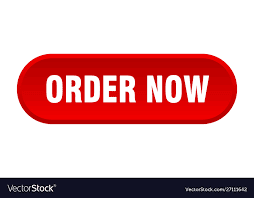- Premium Academic Help From Professionals
- +1 757 528 8682
- support@standardwriter.com
Adaptive Leadership literature review
Adaptive Leadership literature review
|
Order Number |
636738393092 |
|
Type of Project |
ESSAY |
|
Writer Level |
PHD VERIFIED |
|
Format |
APA |
|
Academic Sources |
10 |
|
Page Count |
3-12 PAGES |
Instructions/Descriptions
Adaptive Leadership literature review
What is a literature review?
“A literature review discusses published information in a particular subject area, and sometimes information in a particular subject area within a certain time period.
A literature review usually has an organizational pattern and combines both summary and synthesis. A summary is a recap of the important information of the source, but a synthesis is a re-organization, or a reshuffling, of that information. It might give a new interpretation of old material or combine new with old interpretations. Or it might trace the intellectual progression of the field, including major debates. And depending on the situation, the literature review may evaluate the sources and advise the reader on the most pertinent or relevant.”
How is a literature review different from an academic research paper?
“The main focus of an academic research paper is to develop a new argument, and a research paper will contain a literature review as one of its parts. In a research paper, you use the literature as a foundation and as support for a new insight that you contribute. The focus of a literature review, however, is to summarize and synthesize the arguments and ideas of others without adding new contributions.” The academic research paper also covers a range of sources, but it is usually a select number of sources, because the emphasis is on the argument. Likewise, a literature review can also have an “argument,” but it is not as important as covering a number of sources. In short, an academic research paper and a literature review contain some of the same elements. In fact, many academic research papers will contain a literature review section. But it is the aspect of the study (the argument or the sources) that is emphasized that determines what type of document it is.
Why write literature reviews?
“Literature reviews provide you with a handy guide to a particular topic. If you have limited time to conduct research, literature reviews can give you an overview or act as a stepping stone. For professionals, they are useful reports that keep them up to date with what is current in the field. For scholars, the depth and breadth of the literature review emphasizes the credibility of the writer in his or her field. Literature reviews also provide a solid background for a research paper’s investigation. Comprehensive knowledge of the literature of the field is essential to most research papers.”
What is the format for literature reviews?
“Just like most academic papers, literature reviews also must contain at least three basic elements: an introduction or background information section; the body of the review containing the discussion of sources; and, finally, a conclusion and/or recommendations section to end the paper.
• Introduction: Gives a quick idea of the topic of the literature review, such as the central theme or organizational pattern.
• Body: Contains your discussion of sources and is organized thematically.
• Conclusions/Recommendations: Discuss what you have drawn from reviewing literature so far. Where might the discussion proceed?”
What is a thematic literature review?
“Thematic reviews of literature are organized around a topic or issue, rather than the progression of time.”v
“Sometimes, though, you might need to add additional sections that are necessary for your study, but do not fit in the organizational strategy of the body. What other sections you include in the body is up to you. Put in only what is necessary. Here are a few other sections you might want to consider:
• Current Situation: Information necessary to understand the topic or focus of the literature review.
• History: The chronological progression of the field, the literature, or an idea that is necessary to understand the literature review, if the body of the literature review is not already a chronology.
• Methods and/or Standards: The criteria you used to select the sources in your literature review or the way in which you present your information. For instance, you might explain that your review includes only peer-reviewed articles and journals.
• Questions for Further Research: What questions about the field has the review sparked? How will you further your research as a result of the review?”vi
Important Points to Consider
The paper is to be written in strict conformance to current APA standards, and must contain 10- 15 pages of content (excluding the title page, abstract, and references), utilizing at least 10 scholarly sources.
The paper is to be submitted through SafeAssign at the end of Module/Week 8. It is highly recommended that you download and read the instructions to avoid any stress created by issues that are the result of waiting until the last minute.
• A SafeAssign draft check will be provided for you to use to improve your Originality Score prior to your final submission.
Three levels of current APA headings must be used throughout the paper, as this is a graduate-level research paper.
Some students do not fully understand the difference between plagiarism and paraphrasing. Paraphrasing is when you take a source or someone else’s idea and say it in your own words. When you paraphrase, you must still give the author’s name, date, title of the source, the scholarly journal where it came from, and the exact website address or book.
However, when you directly quote a source, it must have quotation marks around the quote, or (if 40 words or more) it must be set in block quotation format. You must also give detailed information of where you acquired the quote.
For the purpose of this academic paper, adhere to the follow rules when quoting or using a source:
• Do not directly quote more than 120 words from any one source.
• If the source is 2,000 words or less, do not directly quote more than 50 words from any one source.
• Do not use the same source more than a total of 3 times within the whole document for quoting or paraphrasing.
• Quotes must contain the section (if provided) and paragraph or page numbers of the quote, and this information must be placed in the reference.
• In all instances, use current APA guidelines for citations and references.
The paper must not be a series of quotations. Quotes should be used sparingly in doctoral level writing assignments. It is better to paraphrase and cite than to quote.Literature_Review_Grading_Rubric(1)
Adaptive Leadership literature review
| RUBRIC | |||
| Excellent Quality
95-100%
|
Introduction
45-41 points The context and relevance of the issue, as well as a clear description of the study aim, are presented. The history of searches is discussed. |
Literature Support
91-84 points The context and relevance of the issue, as well as a clear description of the study aim, are presented. The history of searches is discussed. |
Methodology
58-53 points With titles for each slide as well as bulleted sections to group relevant information as required, the content is well-organized. Excellent use of typeface, color, images, effects, and so on to improve readability and presenting content. The minimum length criterion of 10 slides/pages is reached. |
| Average Score
50-85% |
40-38 points
More depth/information is required for the context and importance, otherwise the study detail will be unclear. There is no search history information supplied. |
83-76 points
There is a review of important theoretical literature, however there is limited integration of research into problem-related ideas. The review is just partly focused and arranged. There is research that both supports and opposes. A summary of the material given is provided. The conclusion may or may not include a biblical integration. |
52-49 points
The content is somewhat ordered, but there is no discernible organization. The use of typeface, color, graphics, effects, and so on may sometimes distract from the presenting substance. It is possible that the length criteria will not be reached. |
| Poor Quality
0-45% |
37-1 points
The context and/or importance are lacking. There is no search history information supplied. |
75-1 points
There has been an examination of relevant theoretical literature, but still no research concerning problem-related concepts has been synthesized. The review is just somewhat focused and organized. The provided overview of content does not include any supporting or opposing research. The conclusion has no scriptural references. |
48-1 points
There is no logical or apparent organizational structure. There is no discernible logical sequence. The use of typeface, color, graphics, effects, and so on often detracts from the presenting substance. It is possible that the length criteria will not be reached. |
Adaptive Leadership literature review
 |
 |
 |
 |
 |
 |
Adaptive Leadership literature review
Place the Order Here: https://standardwriter.com/orders/or
Adaptive Leadership literature review




